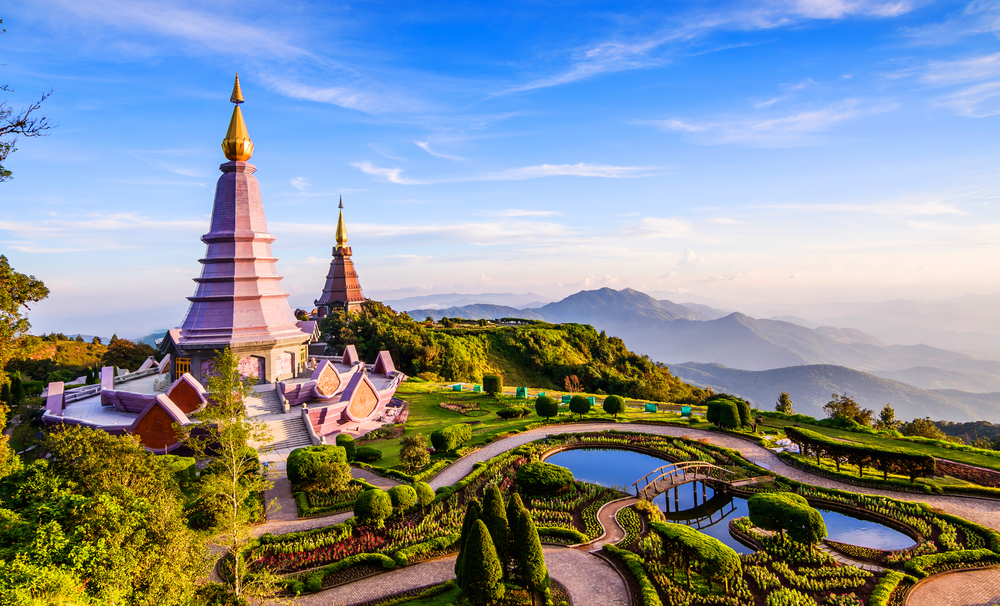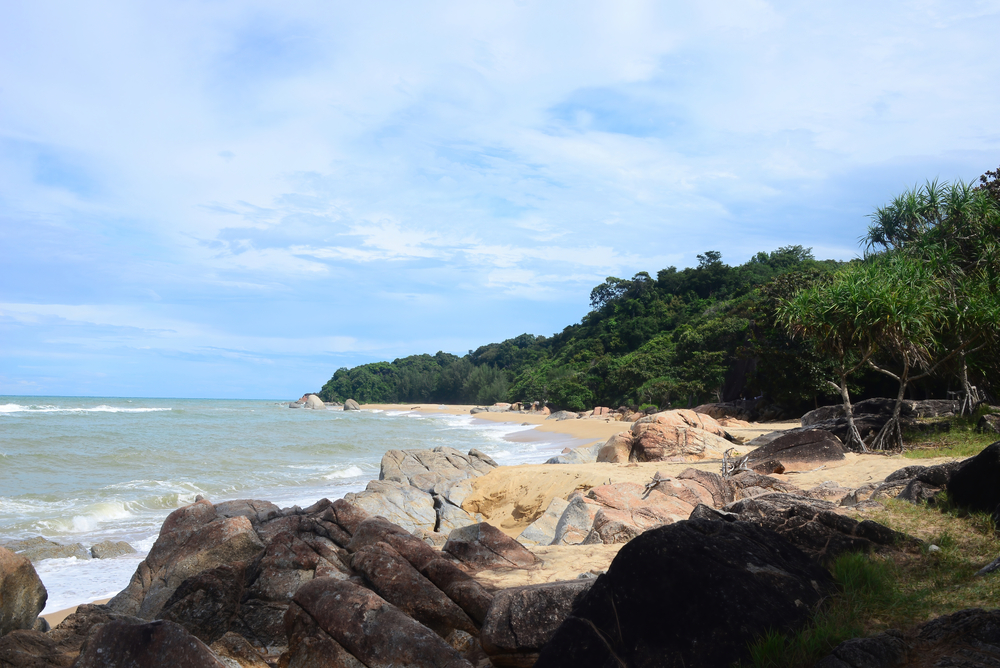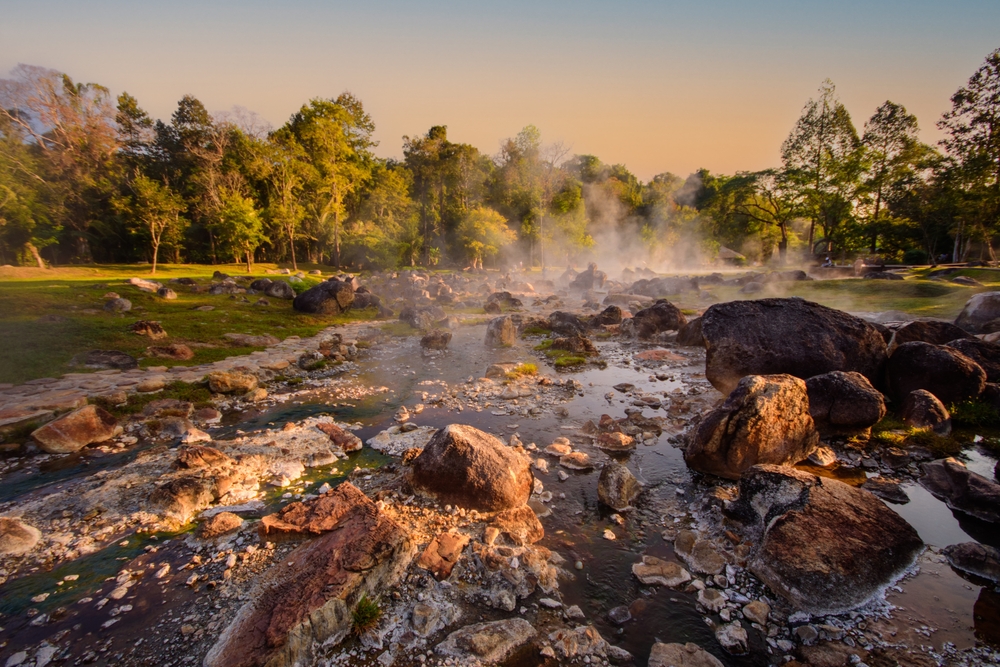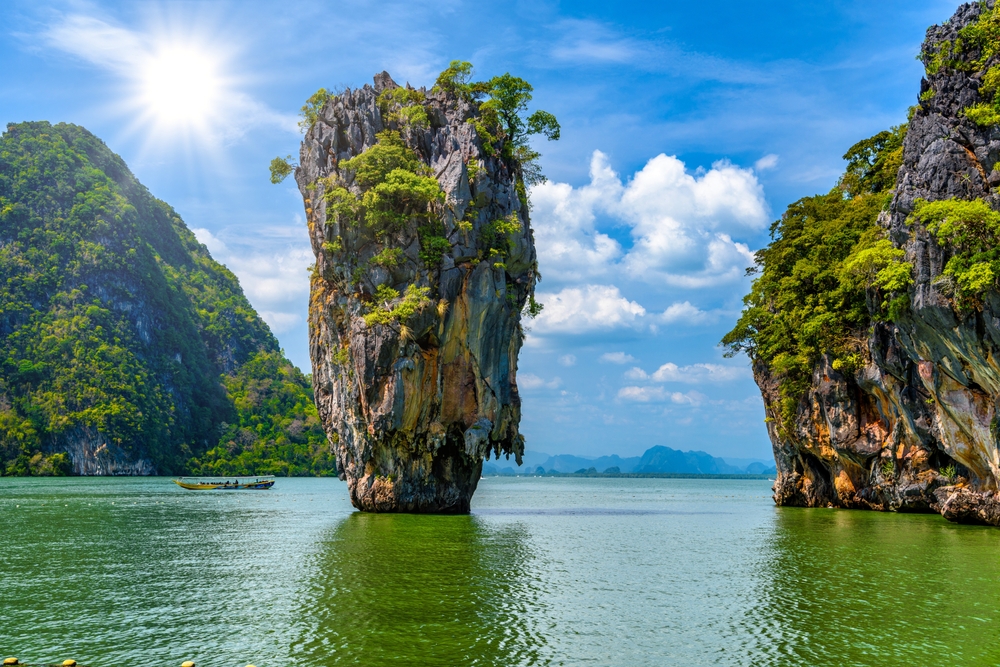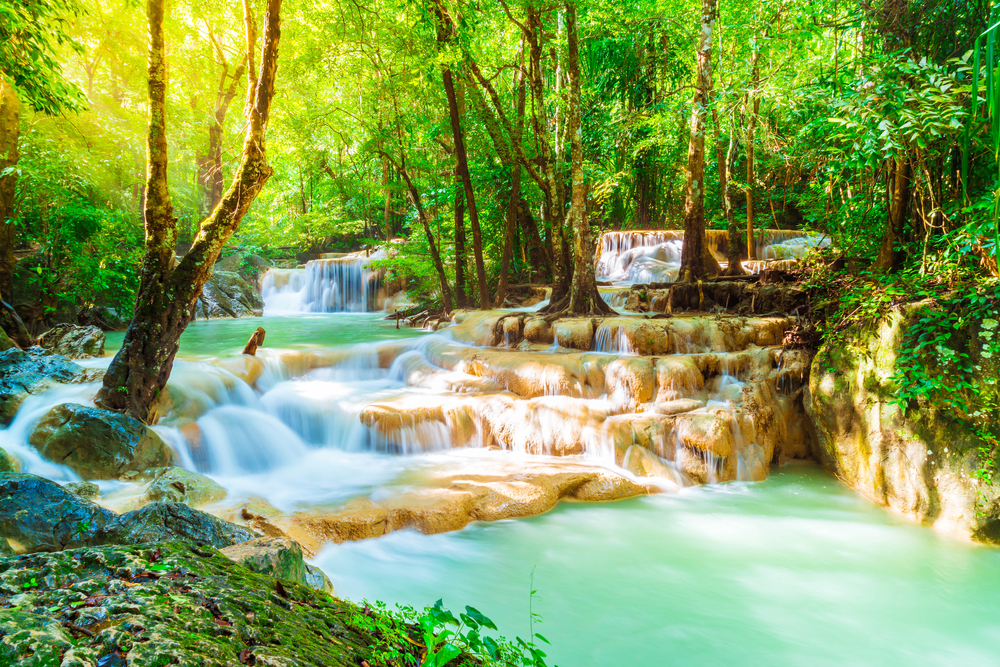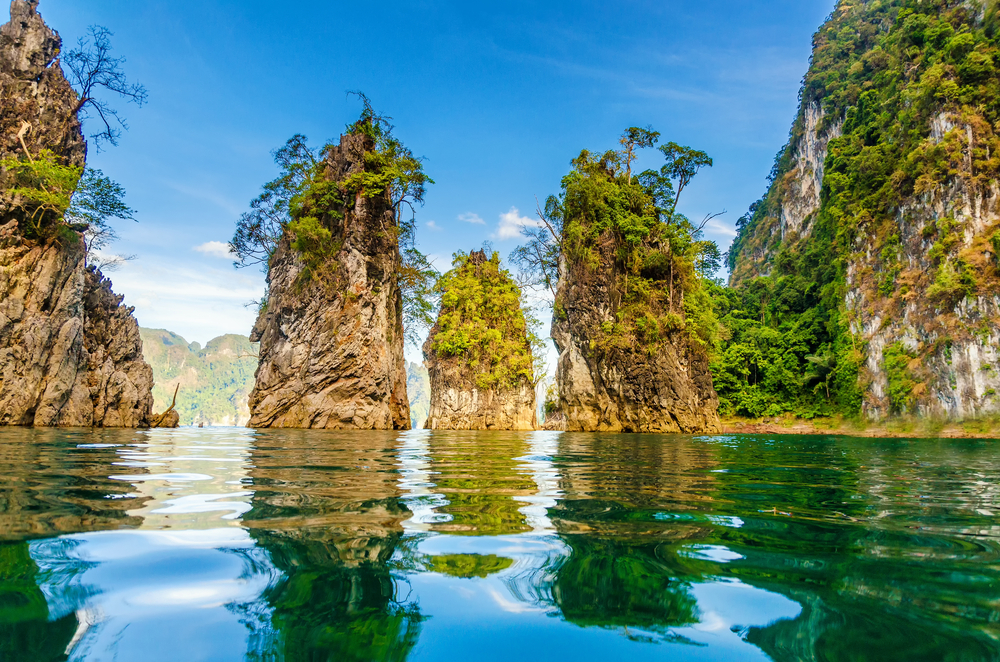Doi Inthanon Overview
Doi Inthanon National Park, known locally as “อุทยานแห่งชาติดอยอินทนนท์” (Uthayan Haeng Chat Doi Inthanon), is one of Thailand’s most stunning natural reserves. Situated in the northern province of Chiang Mai, the park encompasses an area of 186 square miles (482 square kilometers), making it a sizable sanctuary for diverse ecosystems.
Named after Doi Inthanon, the highest peak in Thailand at 8,415 feet (2,565 meters) above sea level, this park is a jewel of the Thai highlands, combining lush landscapes, diverse wildlife, and rich cultural heritage. Its location in the Himalayan mountain range’s southeastern tail end gives it a unique geographical and ecological character.
The park is a tapestry of diverse terrains ranging from misty mountains and steep valleys to cascading waterfalls and dense forests. The summit of Doi Inthanon often experiences cooler temperatures, even frost in the winter, making it a rare cool-weather retreat in tropical Thailand. The vegetation shifts dramatically with elevation, from evergreen cloud forests and mixed deciduous woodlands to montane pine forests.
Among the most picturesque features are waterfalls like Mae Ya, Wachirathan, and Sirithan, which cascade dramatically through the park’s verdant expanse. Visitors also marvel at the Royal Twin Pagodas, built to honor King Bhumibol Adulyadej and Queen Sirikit, perched near the summit with panoramic views of the surrounding highlands.
Doi Inthanon is a haven for wildlife enthusiasts, hosting an extraordinary array of flora and fauna. The park is home to over 360 bird species, making it one of the premier birdwatching destinations in Southeast Asia. Notable avian residents include the green-tailed sunbird, Mrs. Gould’s sunbird, and the rare Himalayan griffon.
Mammals such as Asian black bears, serows, and barking deer roam the forested areas, while smaller species like civets and flying squirrels contribute to the park’s biodiversity. Orchids, ferns, and mosses thrive in the cool, humid environment, lending an enchanting quality to the forest floors.
The park is a popular destination for both Thai and international visitors. Hiking trails, such as the Ang Ka Luang Nature Trail and the Kew Mae Pan Trail, offer immersive experiences in the park’s natural beauty. Local guides often accompany visitors, sharing insights about the region’s ecology and tribal culture.
The summit viewpoint is a must-visit, particularly at sunrise, where the sea of mist below creates an ethereal atmosphere. Local Hmong and Karen communities within the park provide opportunities for cultural interaction and exploration of traditional agricultural practices.
Conservation is a key focus of Doi Inthanon National Park’s management. Challenges include balancing tourism with environmental preservation and addressing habitat loss due to historical deforestation. However, reforestation programs and sustainable tourism initiatives have been successful in restoring degraded areas and promoting awareness about the importance of the park’s ecosystems. Collaborative efforts between the Thai government and local communities have been instrumental in these achievements, ensuring a harmonious coexistence of nature and human activity.








































































